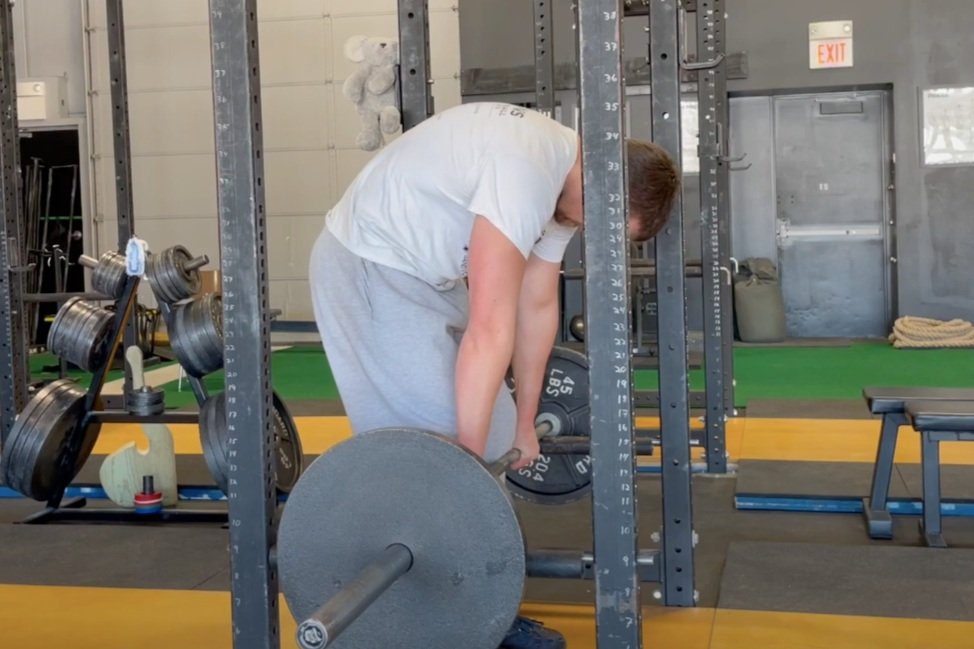Your Hideous Deadlift: Do It WRONG . . . to Get It Right?
/Are you having a tough time setting your back correctly when deadlifting? To get it right, it can help to do it wrong first.
(Watch the included video near the end of this article for a quick demonstration of how to do this.)
In this approach, you're going to set the barbell on the pins (AKA “safeties) of your squat rack with some weight on the bar. You don’t need a lot of weight - just enough to allow yourself to put some tension on the bar (i.e., some upward pull) without actually allowing the bar to start moving upward.
figure 1: his back is so terrible he won’t even show his face.
You're setting the bar on the pins because - when going through the 5-step setup for the deadlift (click here for a video) - most people find it easier to set the back correctly in rigid extension from this higher position as compared to the usual position wherein the plates are on the floor. In Figure 2, I have the barbell set just below my knees, but if you need to start higher than this, that’s perfectly acceptable.
figure 2: The bar is set just below the knees.
Back flexion - or rounding your back - is pretty easy for most people to achieve, and you're going to take advantage of that here. First, cue yourself to flex your back (Figure 3). In other words, you're going to do it wrong. Remember that a person who struggles with back extension can usually do this pretty well - in fact, it’s typically the default position - but if you need a little additional help, you can cue yourself to round your back as high in the air as possible or cue yourself to make your back into a mountain.
figure 3: back flexion
Additionally, make sure your shins stay in contact with the bar throughout this process, and the bar must remain motionless. From your hips on down, nothing should move or change shape.
Once you're in this position, you can feel what it’s like to do it incorrectly, so you're simply going to cue yourself to do the exact opposite of what you just did. You're going to push your belly down between your thighs, thus extending - or straightening - your back (Figure 4). Previously, your back was a mountain, and you now cue yourself to make it a valley (which is an overcue, but we’ll cover that in a bit).
figure 4: Back extension
Perform five reps alternating between the positions of flexion and extension. The cues now become: “Flex - Extend” or simply “Round - Arch.” The cues “arch” and “make a valley” are overcues as you don’t want your back actually arched or overextended. You just want it to be straight, but for someone who struggles with extension, these two overcues can be quite useful.
Once you can set your back in extension at a given pin height, move the pins lower and repeat the process - a set of five reps works pretty well. If you’re working without a coach, record yourself so you can watch it afterward and see if you were indeed setting your back correctly. Once you’ve “graduated” from a certain height, continue to work lower and lower until you’re setting up correctly for a regular deadlift with the plates on the floor.
As always, we hope this helps you get stronger and live better.
-Phil
PS: Whenever you want even more Testify in your life, here are some free resources:
Book a free intro and strategy session with us HERE.
Pick up a free copy of Testify’s Squat Guide: 12 Tips to Improve Your Squat Now HERE.
Get our free weekly email - containing useful videos, articles, and training tips - HERE.
Follow Testify on Instagram HERE.
Subscribe to Testify’s YouTube channel HERE.
(Some links may be affiliate links. As an Amazon Associate, Testify earns from qualifying purchases.)




